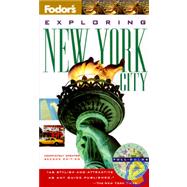
| Quick Reference My New York, by Mick Sinclair New York Is: Discusses aspects of life and living today, from streetlife to art | |
| On the Street Opportunity Films Social Problem Transformation Art Literature Architecture Festivals and Events New York Was | |
| Places the city in its historical context and explores those past events whose influences are felt to this day | |
| Early Settlers Colonial to Independent Immigration Entrepreneurs Expansion The Depression Corruption The Port Bankrupt A to Z | |
| Covers places to visit, including walks and excursions, and lists itineraries, tips for those on a tight budget, and sightseeing ideas for children | |
| Within this section fall the Focus-On articles, which consider a variety of subjects in greater detail | |
| Areas of New York Survival Guide Itineraries View Excursions Accommodations Food and Drink Shopping Nightlife New York for Children New York for Free Focus On Survival Guide Views Boat | |
| Trips African-Americans Brooklyn-by-the-Sea | |
| The Chelsea Hotel | |
| The Chinese Sports Andy Warhol East Europeans Luxurious Restaurants Bars Gay Life | |
| The Beats Places of Worship Guggenheim Architecture Puerto Ricans Abstract Expressionism The Media The Italians | |
| The Jewish Community Secondhand Shopping Egyptian Art Islamic Art The Lehman Collection The Irish MoMA's Fourth Floor Art Deco Grand Central Terminal Art Galleries Statue of Liberty The U.N | |
| in New York Woody Allen Walks Chinatown Streetlife | |
| The East Village Stores and Sights Financial District Architecture | |
| The Heart of Greenwich Village Midtown Manhattan Landmarks Midtown Churches and Museums Art and Elegance Excursions Catskill Mountains Hudson Valley Long Island Travel Facts | |
| Contains the strictly practical information vital for a successful trip | |
| Hotels and Restaurants | |
| Lists recommended establishments throughout New York, giving a brief summary of their attractions | |
| Index | |
| Table of Contents provided by Publisher. All Rights Reserved. |
The New copy of this book will include any supplemental materials advertised. Please check the title of the book to determine if it should include any access cards, study guides, lab manuals, CDs, etc.
The Used, Rental and eBook copies of this book are not guaranteed to include any supplemental materials. Typically, only the book itself is included. This is true even if the title states it includes any access cards, study guides, lab manuals, CDs, etc.
Excerpted from Exploring New York City by Fodor's Travel Publications, Inc. Staff
All rights reserved by the original copyright owners. Excerpts are provided for display purposes only and may not be reproduced, reprinted or distributed without the written permission of the publisher.